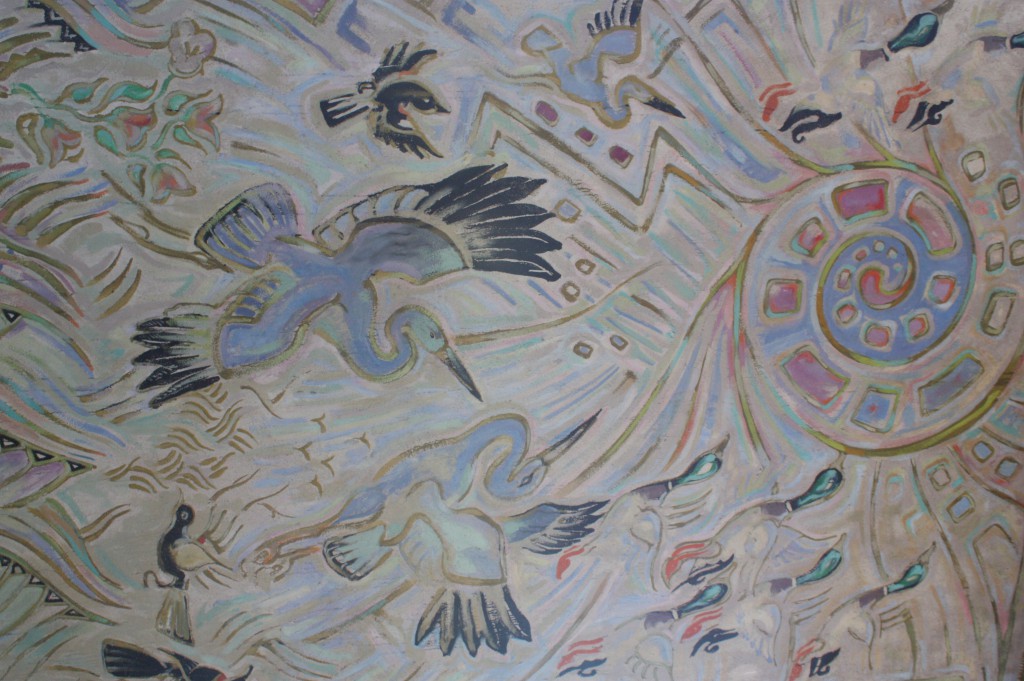Today’s post is my monthly column for the Episcopal News Service:
A number of years ago, my family and I came back to the United States after a semester in England. As we were going through customs, an official picked up my son’s backpack, felt its heft, and exclaimed, “Whew! What’s in here? A bunch of rocks?”
“Yes, sir,” answered my son, for his backpack was indeed full of rocks that we had picked up on our travels through the British Isles. Each carried a memory of some special place we had visited. We were grateful to learn that day that it’s not illegal to haul rocks across international borders, though they will mystify customs officials.

Our family’s rock-gathering habits came to mind recently when I visited the Grotto of the Redemption, an ornate folk-art landmark that covers a city block in the small town of West Bend in northwest Iowa. So this is what can happen when someone’s rock gathering gets out of hand, I thought, gazing up at the conglomeration of concrete studded with pieces of rose quartz, polished agates, jasper, malachite, and petrified wood.
The Grotto of the Redemption is the life work of Father Paul Dobberstein (1872-1954), a Roman Catholic priest who collected rocks and semi-precious stones on his travels. In 1912, he used his collection to start building a shrine that is now one of the largest grottos in the world. Pilgrims come from around the world to marvel and pray, which is somewhat surprising given the fact that this holy place was created afresh: no one was ever martyred here, no saint ever sanctified it with his or her presence, and the surrounding landscape is not particularly scenic. It’s a testimony to a piece of wisdom made popular in the movie Field of Dreams. If you build it, they will come.
There seems to be something instinctual about the human desire to create sacred space. We set St. Francis amid our garden flowers and tuck the Virgin Mary under the shelter of an overturned bathtub. Many of us do even more inside our homes, creating private altars that seem to grow of their own accord on a shelf in our bedroom or on top of a dresser, spots that gradually accrue photographs, stones, sea shells, candles, holy water, and prayer cards. Each seemingly inconsequential item carries a deep weight of memory, prayer, or hope.
The same impulse is at work when families place a cross on the side of the highway where a loved one has died. In winter these little shrines are particularly visible, with their sprays of plastic flowers forming a bright splash of color against the snow. While I hope they help ease the pain of those who mourn, they also carry a message for the rest of us. It’s not a bad thing to be reminded of the fleeting nature of life as we speed along the interstate at 70 miles per hour.
Such altars can be community affairs, too, for they often grow spontaneously after a tragedy such as the shootings in Tucson in 2011. Mounds of bouquets appear within a short time, brought by grieving bystanders whose pain is somehow eased by the bringing of a bit of beauty into a place of darkness.
We need churches to worship, but I think we need these other large and small altars as well, for they remind us that all the world is holy and that our job is to help bless it. Leaving the job of blessing and sanctifying to the clergy means we shirk one of our primary responsibilities as Christians.

While we often think abstract words and ideas best carry the message of our faith, its power is often expressed more clearly and reverently in a flower, a candle, or a little statue picked up at a religious supply store. A friend of mine calls these places “hardware stores for the spirit,” places where you can pick up just the right tool for whatever needs fixing. Sometimes you need a Philips screwdriver, and sometimes you need a plastic figurine of Mary holding baby Jesus, an embodiment of the prayer you carry in your heart.
For after all, we follow a man who chose the most ordinary of things—bread and wine—to carry the most important of messages.















